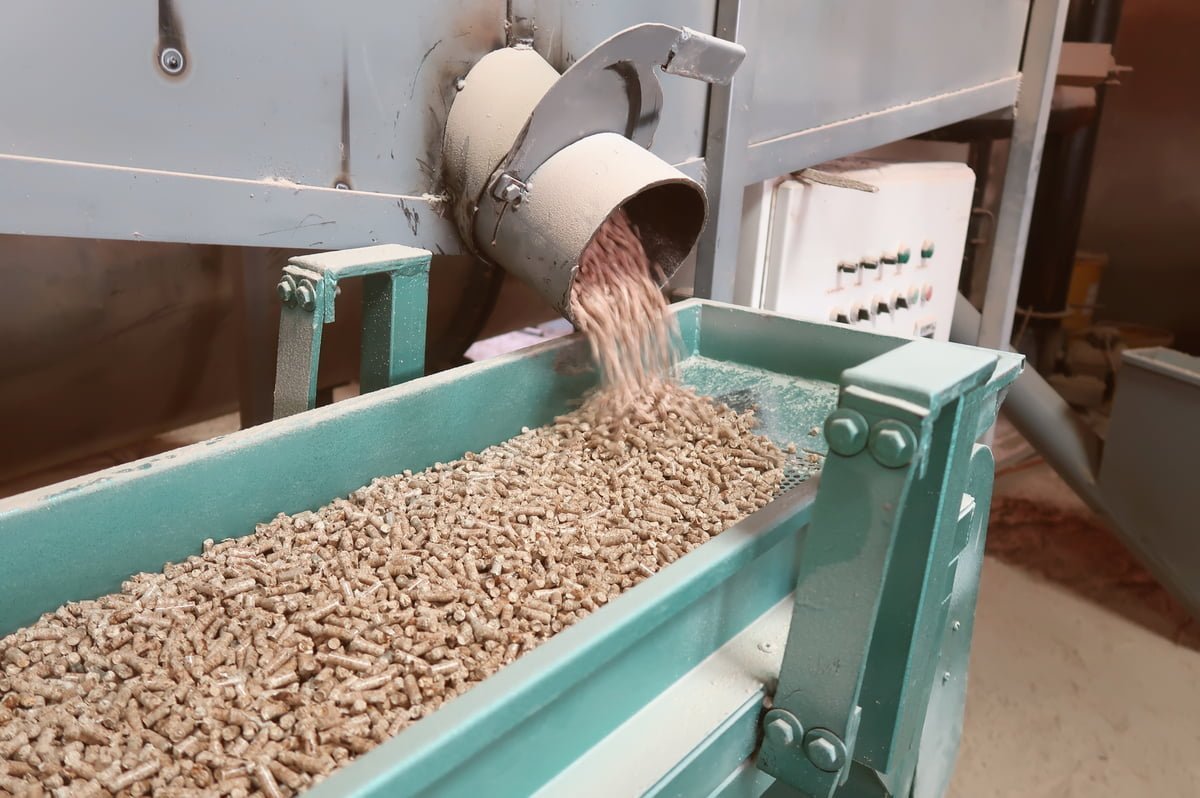Critical properties of wood pellets for optimal burning include consistent size and shape, low moisture content, high energy density, and minimal ash content, ensuring efficient combustion and reduced emissions.
Unlocking the Secrets of Wood Pellets: The Critical Properties You Need to Know
In recent years, there has been a significant increase in the demand for wood pellets as a sustainable energy source. As the world becomes more conscious of the need to reduce greenhouse gas emissions and transition to renewable energy, wood pellets have emerged as a viable alternative to fossil fuels. Wood pellets are a type of biomass fuel that is made from compressed sawdust and other wood waste materials. They are used primarily for heating purposes, both in residential and commercial settings.
Understanding the properties and quality of wood pellets is crucial for ensuring their effectiveness and efficiency as an energy source. The quality of wood pellets can vary greatly depending on factors such as the type of wood used, the production process, and the storage and handling methods. By understanding these factors, consumers can make informed decisions when choosing wood pellets and maximize their benefits.
What are Wood Pellets and How are They Made?
Wood pellets are small cylindrical pellets that are made from compressed sawdust and other wood waste materials. The production process begins with the collection of raw materials, which can include sawdust, wood chips, bark, and even agricultural residues such as straw or corn stalks. These materials are then dried to reduce their moisture content, which is important for ensuring the quality and efficiency of the final product.
Once the raw materials are dried, they are ground into a fine powder. This powder is then fed into a pellet mill, where it is compressed under high pressure and heat. The heat causes the lignin in the wood to soften and act as a natural binder, holding the pellets together. The resulting pellets are then cooled and screened to remove any fines or irregularly shaped pellets.
The types of wood used in pellet production can vary depending on availability and regional preferences. Common types of wood used include softwoods such as pine or spruce, as well as hardwoods like oak or maple. Each type of wood has its own characteristics and can affect the quality and performance of the pellets.
The Advantages of Using Wood Pellets
There are several advantages to using wood pellets as a source of energy. One of the main benefits is their environmental sustainability. Wood pellets are considered carbon-neutral because the carbon dioxide released during combustion is offset by the carbon dioxide absorbed by the trees during their growth. This makes wood pellets a renewable and low-carbon alternative to fossil fuels.
In addition to their environmental benefits, wood pellets are also cost-effective compared to other energy sources. The price of wood pellets is generally stable and not subject to the same price fluctuations as fossil fuels. This can provide long-term cost savings for consumers, especially in regions where heating oil or natural gas prices are high.
Wood pellets also offer a high energy density, meaning they contain a large amount of energy in a compact form. This makes them efficient to transport and store, as well as convenient to use in various heating systems. Wood pellets can be used in pellet stoves, boilers, and furnaces, providing heat for residential homes, commercial buildings, and even industrial processes.
Critical Properties of Wood Pellets: Density and Moisture Content
Two critical properties that determine the quality of wood pellets are density and moisture content. Density refers to the weight of the pellets per unit volume, while moisture content refers to the amount of water present in the pellets.
Density is an important factor because it affects the combustion efficiency and heat output of the pellets. Higher density pellets tend to burn more efficiently and produce more heat, while lower density pellets may not burn as effectively and can result in reduced heat output. The ideal density range for wood pellets is typically between 40-50 pounds per cubic foot.
Moisture content is equally important because it affects both the combustion efficiency and the storage stability of the pellets. High moisture content can lead to incomplete combustion, increased emissions, and reduced heat output. On the other hand, low moisture content can cause the pellets to become brittle and prone to breakage. The ideal moisture content for wood pellets is generally around 6-8%.
The Importance of Particle Size and Shape in Wood Pellets
Particle size and shape are critical factors that can greatly impact the quality and combustion efficiency of wood pellets. The size of the particles affects how well the pellets flow and feed into the combustion chamber, while the shape of the particles affects how well they pack together and burn.
Smaller particle sizes tend to result in denser pellets, which can improve combustion efficiency and heat output. However, excessively small particles can lead to poor pellet durability and increased fines production. On the other hand, larger particle sizes can result in less dense pellets, which may not burn as efficiently.
The shape of the particles also plays a role in pellet quality. Irregularly shaped particles can lead to poor pellet compaction and reduced pellet durability. Ideally, wood pellets should have a uniform shape with smooth surfaces to ensure optimal combustion efficiency.
Recommended standards for particle size and shape vary depending on the specific application and heating system. However, as a general guideline, wood pellets should have a particle size range of 6-8 millimeters and a uniform cylindrical shape.
Understanding the Chemical Composition of Wood Pellets
The chemical composition of wood pellets can vary depending on factors such as the type of wood used and the production process. However, there are certain chemical components that are commonly found in wood pellets.
The main chemical components of wood pellets are cellulose, hemicellulose, and lignin. Cellulose is the most abundant component and provides structural support to the plant cells. Hemicellulose is a complex carbohydrate that acts as a bonding agent between cellulose fibers. Lignin is a complex polymer that provides rigidity to the plant cell walls.
The chemical composition of wood pellets can affect their combustion efficiency and heat output. For example, pellets with a higher lignin content tend to burn more efficiently and produce more heat. On the other hand, pellets with a higher cellulose content may have lower energy density and combustion efficiency.
The Role of Ash Content in Wood Pellet Quality
Ash content is another important factor that can impact the quality of wood pellets. Ash is the inorganic residue that remains after the combustion of the organic components of the pellets. It consists of minerals such as calcium, potassium, and silica.
High ash content can lead to increased emissions, reduced combustion efficiency, and increased maintenance requirements for heating systems. It can also result in the formation of clinkers, which are solid deposits that can clog the combustion chamber and reduce heat transfer.
The ideal ash content for wood pellets depends on the specific application and heating system. For residential heating systems, ash content should generally be below 1%. For commercial or industrial applications, ash content can be slightly higher, but should still be kept below 3%.
How to Test the Quality of Wood Pellets: Standards and Methods
Testing the quality of wood pellets is crucial for ensuring their effectiveness and efficiency as an energy source. There are several testing methods and standards that can be used to evaluate the quality of wood pellets.
One commonly used method is the bulk density test, which measures the weight of a given volume of pellets. This test provides an indication of pellet density and can help determine if the pellets meet the recommended density range.
Another important test is the moisture content test, which measures the amount of water present in the pellets. This test can be performed using a moisture meter or by drying a sample of pellets in an oven and measuring the weight loss.
Ash content can be determined by burning a sample of pellets and measuring the weight of the remaining ash. This test provides an indication of the mineral content of the pellets and can help determine if the ash content is within the recommended range.
It is important to note that testing methods and standards can vary depending on the region and specific application. It is recommended to consult local regulations and industry standards when testing the quality of wood pellets.
The Impact of Storage and Handling on Wood Pellet Quality
The storage and handling of wood pellets can have a significant impact on their quality and shelf life. Proper storage and handling practices are crucial for maintaining the integrity of the pellets and ensuring their effectiveness as an energy source.
One of the main factors to consider when storing wood pellets is moisture. Wood pellets are hygroscopic, which means they can absorb moisture from the surrounding environment. High moisture content can lead to pellet degradation, increased fines production, and reduced combustion efficiency.
To prevent moisture absorption, wood pellets should be stored in a dry and well-ventilated area. They should be kept away from direct sunlight, rain, and other sources of moisture. It is also important to avoid storing pellets on concrete floors, as concrete can absorb moisture and transfer it to the pellets.
Proper handling practices are also important for maintaining pellet quality. Pellets should be handled gently to avoid breakage or fines production. They should be stored in clean containers or bags to prevent contamination from dust or other foreign materials.
Choosing the Right Wood Pellets for Your Application
When choosing wood pellets for different applications, there are several factors to consider. These include the heating system, the specific requirements of the application, and personal preferences.
For residential heating systems, it is important to choose wood pellets that are compatible with the specific stove or boiler. Some heating systems may have specific requirements regarding pellet size, shape, or composition. It is recommended to consult the manufacturer’s guidelines or seek professional advice when choosing wood pellets for residential heating systems.
For commercial or industrial applications, the specific requirements may vary depending on the size and type of the heating system. It is important to consider factors such as heat output, combustion efficiency, and ash content when choosing wood pellets for these applications.
Personal preferences can also play a role in choosing wood pellets. Some people may prefer pellets made from a specific type of wood, while others may prioritize factors such as sustainability or cost-effectiveness. It is important to consider these preferences and choose wood pellets that align with individual values and priorities.
Unlocking the Secrets of Wood Pellets for Sustainable Energy
In conclusion, understanding the properties and quality of wood pellets is crucial for maximizing their benefits as a sustainable energy source. Wood pellets offer several advantages, including environmental sustainability, cost-effectiveness, and high energy density. However, their quality can vary depending on factors such as density, moisture content, particle size and shape, chemical composition, ash content, and storage and handling practices.
By understanding these factors and following recommended standards and best practices, consumers can ensure that they are using high-quality wood pellets that provide optimal performance and efficiency. It is also important to promote the use of wood pellets as a sustainable energy source and encourage further research and development in this field. With the growing demand for renewable energy solutions, wood pellets have the potential to play a significant role in reducing greenhouse gas emissions and transitioning to a more sustainable future.
Originally posted 2024-02-01 13:48:14.



